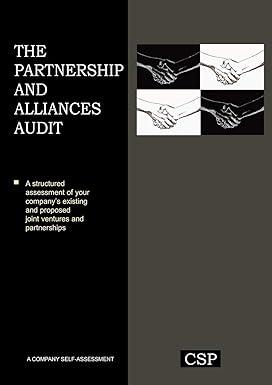Question
Smith Hotel & Casino is situated on Lake Tahoe. The complex includes a 300-room hotel, a casino, and a restaurant. As Smith's new controller, you
Smith Hotel & Casino is situated on Lake Tahoe. The complex includes a 300-room hotel, a casino, and a restaurant. As Smith's new controller, you are asked to recommend the basis to be used for allocating fixed overhead costs to the three divisions in 2017. You are presented with the following income statement information for 2016:
| Hotel | Restaurant | Casino | |
| Revenues | $18,924,000 | $5,394,000 | $12,350,000 |
| Direct Costs | $9,775,000 | $4,310,600 | $4,368,100 |
| Segment Margin | $9,149,000 | $1,083,400 | $7,981,900 |
| Hotel Restaurant Casino Floor Space | Hotel | Restaurant | Casino |
| Floor Space (Square Feet) | 115,000 | 23,000 | 92,000 |
| Number of Employees | 120 | 30 | 150 |
You are told that you may choose to allocate indirect costs based on one of the following: direct costs, floor space, or the number of employees. Total fixed overhead costs for 2011 was $14,640,000.
Requirement 1: Calculate division margins in percentage terms prior to allocating fixed overhead costs. (Round your answers to two decimal places) Hotel Restaurant Casino Division Margin ?% ?% ?% Requirement
2. Allocate indirect costs to the three divisions using each of the three allocation bases suggested. For each allocation base, calculate division operating margins after allocations in dollars and as a percentage of revenues. Allocate the indirect costs, then calculate the division operating margin in dollars and as a percentage of revenue for each segment. Hotel Restaurant Casino Smith (Total) Allocated Fixed Overhead Costs ? ? ? ? Operating Margin ? ? ? ? Operating Margin % ?% ?% ?% Next Allocate costs based on floor space same Table above And finally costs based on number of employers based on the Table above Requirement
3: Discuss the results. How would you decide to allocate indirect costs to the divisions? Why? There is (a dramatic difference/no difference) in the operating margin percentages depending upon which allocation base is chosen. Where cost allocation is required, the (cause-and-effect/direct cost/non-financial) and (benefits recieved/division-costs/floor-space) criteria are recommended. The $14,640,000 is (fixed/variable) overhead cost. This means that on a short-run basis the (cause-and-effect/direct cost/non-financial) criterion is not appropriate but Smith could attempt to identify the cost drivers for these costs in the long run. Smith should look at how the $14,640,000 cost (benefits/is a detriment to) the tdivisionssions.
| 4. | Would you recommend closing any of the three divisions (and possibly reallocating resources to other divisions) as a result of your analysis? If so, which division would you close and why? |
Step by Step Solution
There are 3 Steps involved in it
Step: 1

Get Instant Access to Expert-Tailored Solutions
See step-by-step solutions with expert insights and AI powered tools for academic success
Step: 2

Step: 3

Ace Your Homework with AI
Get the answers you need in no time with our AI-driven, step-by-step assistance
Get Started


